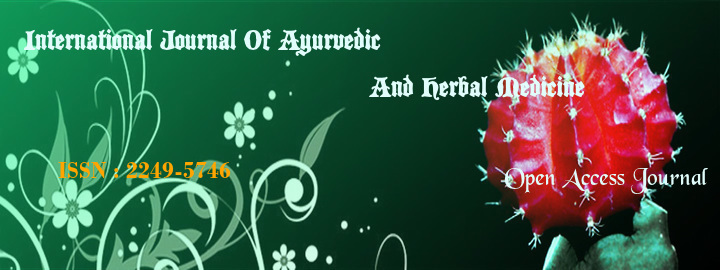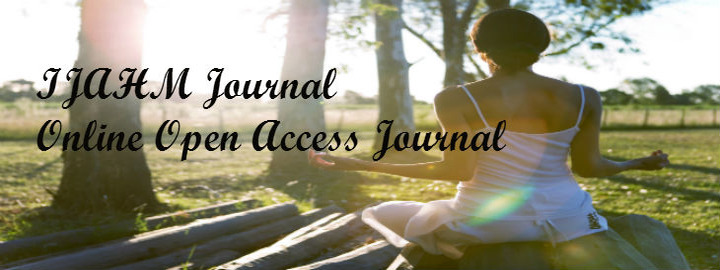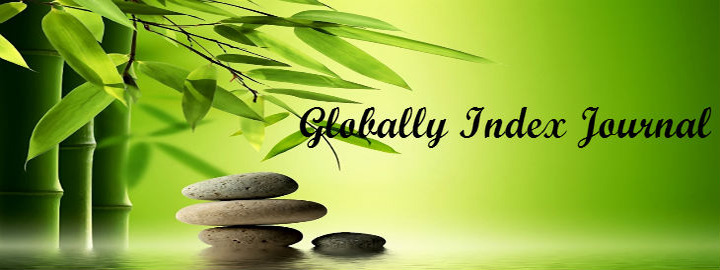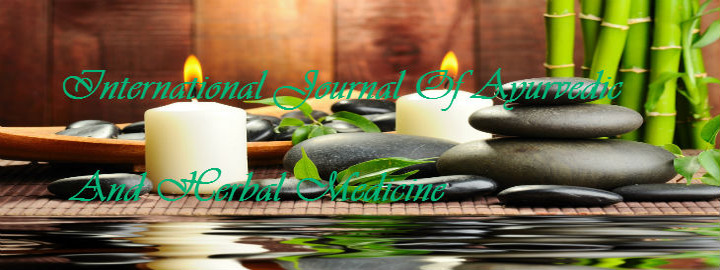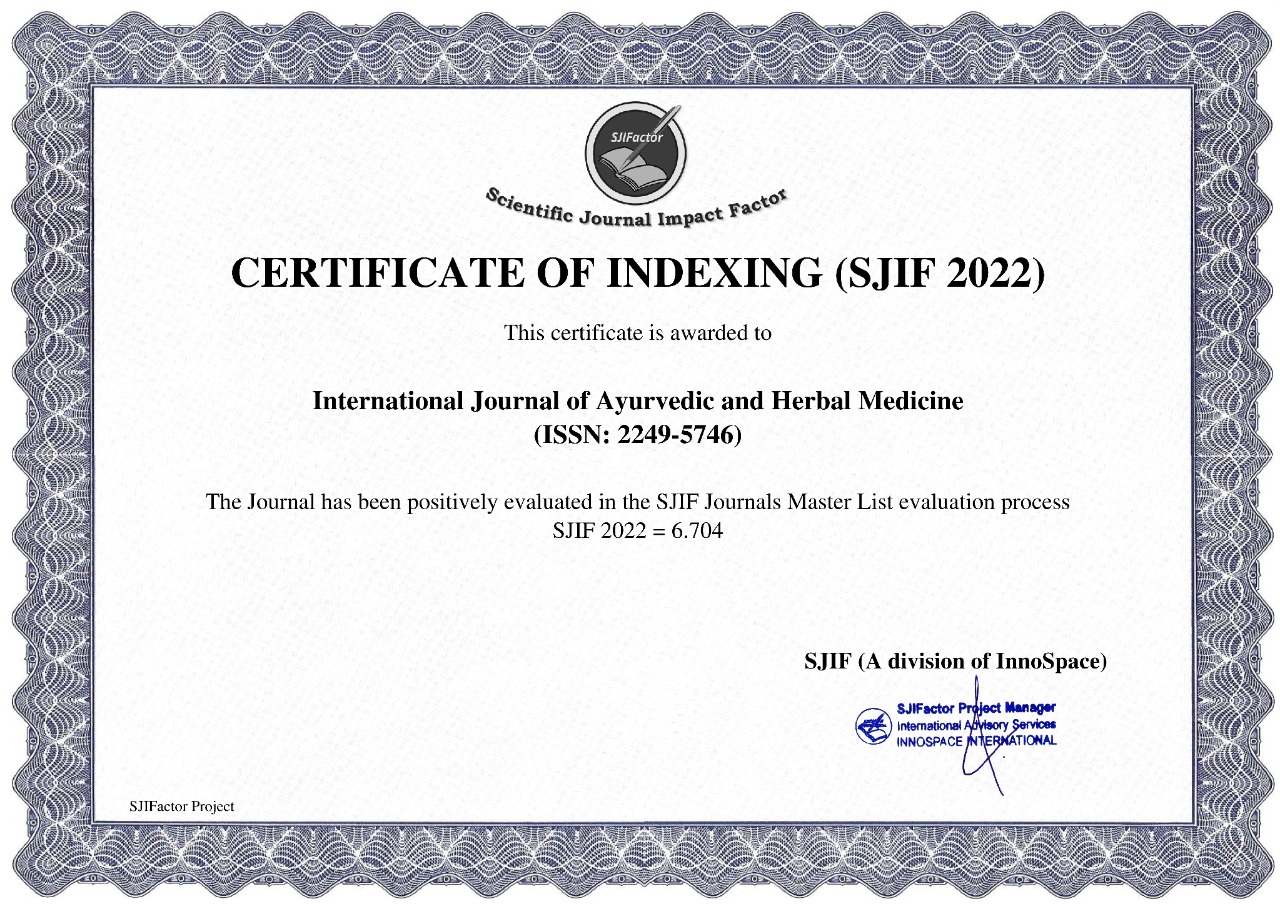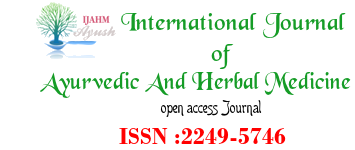


Dr.Parulkar Geeta[1] D. M.D.(Chikitsa)(Mum),PhD(Chikitsa)(Mum)Professor(Chikitsa)
Dr.Kharat Manjushri[2] M.D.(Chikitsa)(Sch)(MUHS),
R.A.Podar (Govt.) Medical College, attached to M.A.Podar Hospital, Worli,Mumbai,Maharashtra
This email address is being protected from spambots. You need JavaScript enabled to view it.
Abstract
Panchakarmas:
‘Panchakarmas’ literally means ‘Five Methods of Body Purification’, which are employed in healthy person to prevent diseases and improve immunity as also in the sick to treat number of diseases.
There are certain preparatory methods to be done before the actual Panchakarmas performed. They are called as ‘Poorvakarma’ in Ayurveda and involve internal administration of medicated oil or ghee etc. (Abhyantara Snehana), external application of oils (Bahya Snehana) and fomentation (Swedana).[1]
Panchakarmas as per Sushruta Samhita are:
Ø Vamana (Emesis therapy)
Ø Virechana (Purgation therapy)
Ø Nasya (Nasal insuffalation)
Ø Basti (Enema therapy)
Ø Raktmokshana (Blood-letting therapy)[2]
Keywords:
References
1. Dr.Kohli K.R.. Director of AYUSH, Mumbai, Maharashtra.“Five modes of cleansing”. Holistic Healing September 2000; Vol 3, No. 1:Page 6.
2.Vaidya Yadavji Trikamji Acharya. Sushruta Samhita Of Sushruta with Nibandhasangraha commentary. Published by Chaukhamba Surbharati Prakashana.Varanasi.
3. Dr. G.Shrinivasa Acharya. Panchakarma Illustrated. First edition, Published by Chaukhamba Sanskrit Pratishthan, Delhi,2006, Page 337-361.
1-
index







